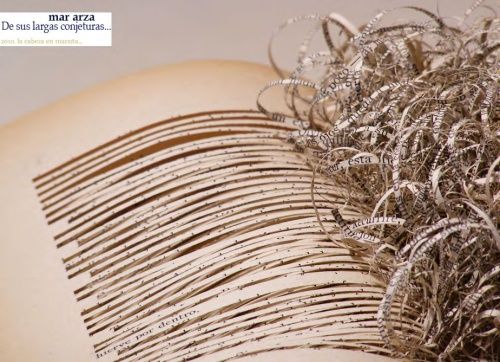
This project questions two certainties that have framed the interpretations of art, knowledge and images: sharpness versus opacity, transparency versus secrecy, light versus blackout. The latticework offers all its disruptive power here: it is a space ready to look at, but at the same time it is a crossroads from where we are forced to translate, or to decipher, or to assume our position while we acquire it.
Franz Kafka left us, in El Castillo (1926), an image from which to “observe” how the symbolic architecture of power is erected, its infinite stays, the administrative and social twists and turns, those nonsense that extinguish lucidity or that, on the contrary, illuminate the most violent abstractions.
Following this same logic of normalization of the absurd, Leslie Kaplan, with Excess – The Factory (1982), and Alain Robbe-Grillet, through The Lattice (1957), delved into the alienating component of any hierarchical system, whether it be that of capitalist material production or that of the administration of feelings.
Mar Arza (Castelló de la Plana, 1976) follows in the footsteps of the previous examples, investigating the reverse of the typifications, as well as certain mechanics polarised between clarifying and stunning, between standardising and imposing. The artist’s work can no longer be framed in an intangible territory; likewise, aesthetic contemplation has abandoned its former character of personal epiphany. When we speak of images, we also allude – above all we are referring to – to the public uses that they allow, or to those that they push; when we invoke to see we are calling for a series of collective and ideological operations, some positions to be taken.
Mar Arza’s project for La Virreina Centre de la Imatge problematizes a certain dialectic that has marked the interpretation of art and knowledge, the extremes of which would be clarity against opacity, transparency against hermeticism, light and blackout. However, there are numerous disruptive pathways, occlusions, diagonals and flickering. The latticework offers all its literal power here: it is a space ready to look at, but at the same time it is a crossroads from where little can be done, where we are forced to translate or decipher. A watchtower and a cloister, a refuge and a prison, are not both “excesses” the danger of the visible, the fears and the impossibilities of reading, the temptation of writing?. Curator: Valentín Roma
La Virreina. La Rambla, 99 08002 Barcelona España
http://ajuntament.barcelona.cat/lavirreina/es
Image: Mar Arza
